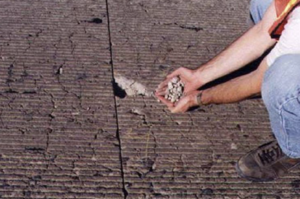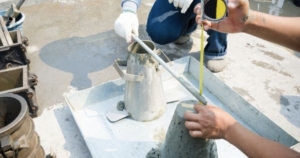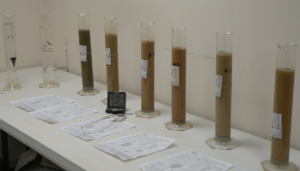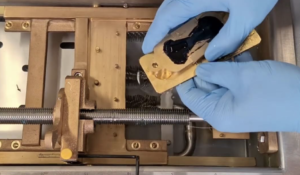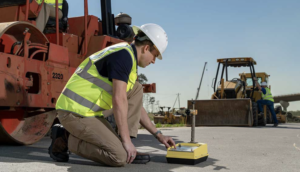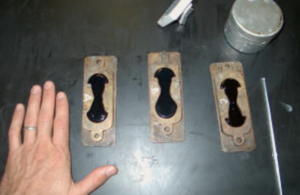How Do Soil Bearing Capacity Tests Support the Construction of Offshore Wind Turbine Foundations?
As offshore wind energy expands, the design of wind turbine foundations becomes increasingly critical. These massive structures must endure not only the weight of the turbine but also extreme environmental loads from waves, currents, and wind. Soil bearing capacity tests1 serve as the backbone of foundation design, helping engineers understand how different types of marine soil respond to stress. By applying advanced testing techniques, project teams can confidently select and optimize foundation systems—ensuring safety, efficiency, and long-term performance at sea.
Static Plate Load Tests to Evaluate Seabed Soil Capacity for Monopile Foundations
Monopile foundations are widely used in offshore wind farms, especially in shallow to moderate water depths. To ensure they won’t excessively settle or tilt, engineers conduct static plate load tests2 on the seabed to evaluate soil strength and deformation behavior3 under real-time loading.
How It Works:
- A steel plate is placed on the prepared seabed.
- Incremental loads are applied using hydraulic or ballast systems.
- Settlement is recorded at each load step until bearing failure or design load.
| Test Output | Engineering Use |
|---|---|
| Load–settlement curve | Assess ultimate bearing capacity |
| Elastic deformation modulus | Estimate short-term seabed response |
| Plate rotation/stiffness | Evaluate lateral resistance under turbine loading |
This test helps verify whether the seabed can safely support large-diameter monopiles without unacceptable vertical displacement.
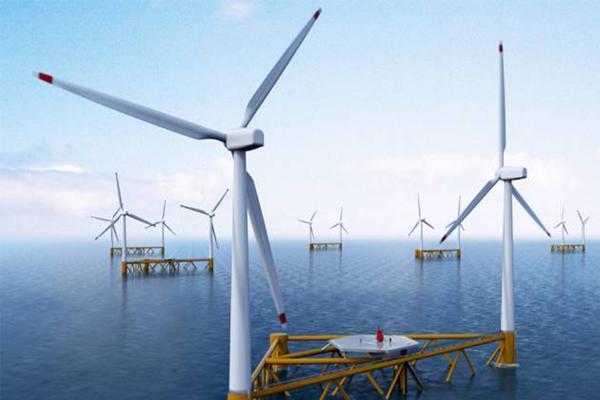
Cone Penetration Tests in Soft Marine Soils for Jacket Foundation Design
Jacket foundations—used for deeper waters—rely on piles driven into soft or layered marine soils4. Cone Penetration Tests (CPTs)5 are essential for profiling these sediments and ensuring pile embedment depth and stiffness6 are sufficient.
CPT Features:
- Measures tip resistance, sleeve friction, and pore pressure.
- Performed from floating or jack-up platforms.
- Provides continuous data with depth—ideal for variable marine deposits.
| Parameter Measured | Purpose in Jacket Design |
|---|---|
| Cone resistance (qc) | Estimate end-bearing capacity |
| Sleeve friction (fs) | Evaluate shaft friction for axial loads |
| Pore pressure (u2) | Identify soft clays or layered interfaces |
CPT data allows engineers to simulate lateral pile behavior and ensure jacket legs resist dynamic wind and wave forces.

Borehole Shear Tests to Analyze Soil–Structure Interaction of Suction Caisson Foundations
Suction caisson foundations function like inverted buckets7, using negative pressure to anchor into the seabed. To assess their interface behavior and lateral capacity, borehole shear tests (BSTs)8 are used during geotechnical investigations.
How BSTs Work:
- Conducted in a pre-drilled borehole using a cylindrical probe.
- Shearing occurs radially along the borehole wall.
- Measures in-situ shear strength without removing the sample.
| BST Output | Design Application |
|---|---|
| Undrained shear strength | Determines caisson penetration resistance |
| Interface friction angle | Models soil–steel interaction behavior |
| Shear modulus | Assesses dynamic stiffness under loading |
BSTs offer localized shear data vital for mooring, anchoring, and overturning resistance of suction caissons.
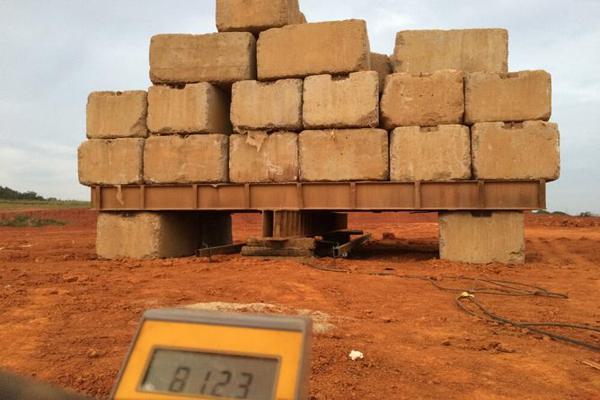
Seismic Soil–Foundation Interaction Tests for Earthquake-Resistant Design of Offshore Wind Turbines
Offshore wind farms near tectonic zones—like Japan or California—require design consideration for seismic events. Specialized tests assess how soil and foundation systems respond together under cyclic or dynamic loads.
Key Testing Methods:
- Cyclic triaxial testing of marine clays and sands.
- Shake table testing of soil–foundation models.
- Numerical simulations calibrated with test data.
| Measured Behavior | Relevance to Seismic Design |
|---|---|
| Liquefaction potential | Risk to foundation settlement or tilting |
| Dynamic stiffness degradation | Evaluate performance during repeated shaking |
| Damping ratio | Affects structural response to ground motion |
These tests ensure turbine foundations can withstand seismic loading without loss of capacity, safeguarding both structure and grid reliability.

Conclusion
Soil bearing capacity tests are the silent engineers behind every offshore wind turbine foundation. From plate load testing of monopiles to seismic assessments of soil–structure systems, each method plays a vital role in ensuring safety, performance, and environmental resilience. As offshore wind continues to grow, these tests will remain key to anchoring our renewable energy future—firmly and sustainably.
-
Understanding soil bearing capacity tests is crucial for ensuring the safety and efficiency of offshore wind turbine foundations. Explore this link to learn more. ↩
-
Understanding static plate load tests is crucial for evaluating soil strength in offshore wind farm foundations. Explore this link for detailed insights. ↩
-
Exploring soil strength and deformation behavior is essential for ensuring the stability of monopile foundations. Discover more about this topic here. ↩
-
Understanding the challenges of using piles in marine soils can enhance your knowledge of foundation engineering and design. ↩
-
Exploring the significance of CPTs will provide insights into their role in soil profiling and foundation design. ↩
-
Learning about the effects of embedment depth and stiffness on stability is crucial for effective foundation design. ↩
-
Understanding inverted buckets is crucial for grasping how suction caisson foundations work effectively in marine environments. ↩
-
Exploring BSTs will provide insights into their role in assessing foundation stability and soil behavior, essential for engineering projects. ↩

